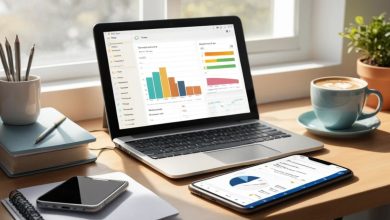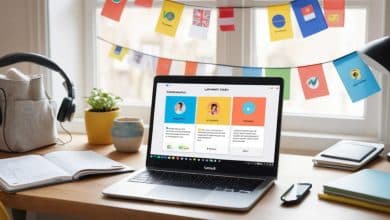Comprehensive Educational Resources for Distance Learning
The best comprehensive educational resources for distance learning include video-conferencing platforms like Zoom, learning management systems such as Canvas and Moodle, interactive content tools like Nearpod and Kahoot!, open educational repositories (OER) like OpenStax, and virtual collaboration suites including Google Workspace for Education.
Why Distance Learning Resources Are Critical
The shift to remote education accelerated dramatically in recent years, revealing both opportunities and challenges. Quality distance learning resources are essential because they:
-
Enable flexible access: Students can learn from anywhere, eliminating geographic constraints and ensuring continuity during disruptions.
-
Support personalized pacing: Adaptive technologies let learners progress at their own speed, catering to diverse proficiency levels.
-
Enhance engagement: Interactive tools—quizzes, polls, virtual labs—keep students active and invested, reducing the risk of passive screen time.
-
Scale efficiently: A single digital course can reach hundreds or thousands of learners without the overhead of physical classrooms.
These resources not only bridge educational equity gaps but also empower instructors to deliver dynamic, data-driven instruction.
Categories of Distance Learning Platforms
Video Conferencing Platforms
-
Zoom: Widely used for its reliable video quality, Zoom offers breakout rooms for small-group work, screen sharing for live demonstrations, and polling to gauge comprehension in real time.
-
Microsoft Teams: Integrated seamlessly with Office 365, Teams provides threaded chats, a virtual whiteboard for collaborative problem-solving, and direct access to OneDrive documents during live sessions.
Learning Management Systems
-
Canvas: Known for its intuitive interface, Canvas hosts course modules, quizzes, and assignments in a centralized gradebook. The mobile app ensures students can access materials on the go.
-
Moodle: As an open-source LMS, Moodle offers extensive plugin options—ranging from peer-assessment tools to gamification modules—allowing institutions to tailor the environment to their curriculum needs.
Content Creation & Interactive Tools
-
Nearpod: Educators can build interactive slide decks that incorporate polls, quizzes, and VR experiences. Nearpod analytics track student responses in real time, enabling immediate adjustments to instruction.
-
Kahoot!: This game-based platform turns quizzes into competitive, engaging sessions. Teachers create multiple-choice questions and launch them live; students answer on their devices, with leaderboards fueling motivation.
Open Educational Resources (OER)
-
OpenStax: Offers free, peer-reviewed textbooks for core subjects such as physics, biology, and economics. Each textbook is downloadable in PDF or EPUB formats and includes ancillary materials like test banks.
-
OER Commons: A searchable repository of lesson plans, videos, and modules aligned to multiple educational standards. Teachers can remix and redistribute these resources to fit their specific course requirements.
Assessment & Feedback Tools
-
Google Forms/Quizzes: Educators can create custom quizzes with automatic grading and question branching, delivering immediate feedback to learners. Response data integrates directly into Google Sheets for deeper analysis.
-
Edpuzzle: Allows instructors to embed questions—multiple choice or open-ended—directly into video lessons. Students must answer each prompt before continuing, ensuring active engagement with the content.
Virtual Collaboration Suites
-
Google Workspace for Education: Includes Google Docs, Slides, and Drive, enabling synchronous collaboration. Google Classroom integrates assignments, announcements, and feedback in a streamlined workflow.
-
Microsoft 365 Education: Offers OneDrive for file storage, Teams for live collaboration, and OneNote Class Notebook for shared note-taking and annotations.
Adaptive & Personalized Learning
-
DreamBox Learning: For K–8 math, this AI-driven platform adjusts problem difficulty based on each student’s responses, providing scaffolding exactly where needed.
-
Smart Sparrow: Allows educators to create adaptive lessons in science and humanities; the platform’s analytics dashboard highlights learner pathways and misconceptions.
Traditional vs. Distance Learning Resources
| Feature | Traditional Classroom Tools | Distance Learning Alternatives |
|---|---|---|
| Delivery Format | In-person lectures, printed handouts | Live video sessions, downloadable PDFs, interactive modules |
| Content Accessibility | Classroom-bound materials, library loans | 24/7 access via LMS, mobile apps, offline download options |
| Student Engagement | Face-to-face Q&A, in-person group discussions | Virtual breakout rooms, real-time polls, gamified quizzes |
| Assessment Methods | Paper exams, in-class quizzes | Automated online quizzes, e-portfolios, detailed analytics |
| Collaboration | Group projects in physical classrooms | Shared documents (Google Docs), discussion boards, virtual group workspaces |
| Scalability & Reach | Limited by physical space and staffing | Scales to hundreds or thousands of learners globally |
| Cost | Facility overhead, printed materials | Subscription fees for platforms, minimal physical materials; many free/OER options available |
Pros & Cons
-
Traditional Tools:
-
Pros: Face-to-face interaction, tactile materials that benefit kinesthetic learners.
-
Cons: Geographic and scheduling constraints, limited scalability, higher facility costs.
-
-
Distance Learning Tools:
-
Pros: Flexible access, scalable to large cohorts, data-driven personalization, reduced reliance on physical infrastructure.
-
Cons: Dependence on reliable internet, potential for student disengagement if poorly implemented, learning curve for educators.
-
Effective Distance Learning Implementations
Urban High School Deploys LMS + OER to Bridge Gaps
-
Context: An underfunded district transitioned to a hybrid model due to facility constraints.
-
Resources Used:
-
Canvas served as the central hub for all coursework—assignments, discussions, and quizzes.
-
OpenStax textbooks replaced costly print editions, providing free, peer-reviewed materials in math and science.
-
-
Outcome:
-
Maintained a 90% student participation rate during remote weeks.
-
Achieved a 15% improvement in math and science proficiency, as measured by district assessments.
-
Rural College Adopts Video Conferencing + Collaboration Suite
-
Context: Severe weather frequently canceled in-person classes, hampering course continuity.
-
Resources Used:
-
Zoom enabled synchronous lectures and virtual office hours, minimizing missed instruction days.
-
Google Workspace for Education powered collaborative assignments—students co-authored papers in real time and shared feedback through comments.
-
-
Outcome:
-
Recorded a 100% course completion rate during the winter term.
-
Enhanced student satisfaction—reported by 87%—citing ease of accessing virtual labs and group projects, boosting retention by 12%.
-
Corporate Training Program Integrates Interactive Tools
-
Context: A mid-size company needed to upskill remote teams on new software tools.
-
Resources Used:
-
Nearpod delivered interactive onboarding modules with embedded virtual reality tours of simulated work environments.
-
Edpuzzle used microlearning videos with integrated quizzes to reinforce key processes.
-
-
Outcome:
-
Reduced onboarding time by 30%, allowing employees to become proficient more quickly.
-
Increased training satisfaction by 25%, as measured through post-training surveys.
-
Implementing a Comprehensive Distance Learning Ecosystem
-
Conduct a Needs Assessment
-
Survey stakeholders—teachers, students, and parents—to identify technology gaps, preferred learning modalities, and accessibility needs.
-
Inventory existing resources:
-
Hardware availability (e.g., computers, webcams).
-
Internet bandwidth across student households.
-
Faculty digital literacy levels.
-
-
-
Select Core Platforms
-
Video Conferencing: Evaluate Zoom (user-friendly interface, breakout rooms) or Microsoft Teams (integrated Office 365 suite, robust chat features).
-
LMS: Choose between Canvas (intuitive, comprehensive analytics) and Moodle (open-source flexibility, low licensing costs).
-
Collaboration Suite: Standardize on Google Workspace for Education or Microsoft 365 Education, depending on existing district licenses and teacher familiarity.
-
-
Integrate Content & Interactive Tools
-
Curate OER: Import OpenStax textbooks into your LMS, assigning chapters as modules to eliminate textbook costs.
-
Build Interactive Lessons:
-
Create Nearpod modules that blend slides, polls, and VR excursions.
-
Develop Kahoot! quizzes for live or asynchronous engagement.
-
-
Embed Formative Checks:
-
Use Edpuzzle to insert comprehension questions into video lectures.
-
Deploy Google Forms quizzes to auto-grade short checks and feed results into spreadsheets.
-
-
-
Train Educators & Support Staff
-
Organize live workshops (2–3 hours) to cover:
-
Navigating the chosen LMS (creating modules, grading, and analytics).
-
Hosting and managing Zoom meetings or Teams sessions.
-
Setting up and moderating Google Classroom or Teams channels.
-
-
Provide asynchronous “how-to” resources:
-
Short video tutorials on creating Nearpod lessons or Kahoot! games.
-
Quick reference guides for troubleshooting common issues (e.g., audio settings, screen sharing).
-
-
Establish a help desk or peer-coach program to address any technical hurdles.
-
-
Pilot & Refine
-
Run a four-week pilot with a single department or grade level, collecting quantitative data:
-
LMS login rates and module completion.
-
Zoom attendance and participation rates.
-
Nearpod response accuracy and time-on-task metrics.
-
-
Gather qualitative feedback via surveys:
-
Teacher ease-of-use ratings.
-
Student engagement and clarity of instructions.
-
-
Adjust implementation:
-
Optimize content sequencing in the LMS, perhaps reordering modules based on student comprehension data.
-
Troubleshoot connectivity or user-role issues uncovered during the pilot.
-
-
-
Scale and Monitor
-
Roll out the refined ecosystem district-wide or across additional courses.
-
Establish a centralized monitoring dashboard:
-
Engagement Metrics: Daily active users on the LMS, average time spent on interactive modules, participation in live polls.
-
Academic Outcomes: Assignment grades, formative quiz averages, final exam performance.
-
-
Schedule quarterly review meetings to:
-
Introduce new tools (e.g., DreamBox for math or Smart Sparrow for science).
-
Phase out underutilized or redundant resources.
-
Offer advanced training for faculty eager to deepen their digital pedagogy.
-
-
FAQs (Rich-Result Ready)
What is the most user-friendly LMS for K–12 distance learning?
Canvas is frequently praised for its intuitive design, integrated gradebook, and robust mobile app, making it ideal for K–12 educators. Moodle, while open-source and highly customizable, often requires more technical setup and initial training.
How can low-bandwidth students access video lessons?
Use downloadable lesson packets—PDFs or low-resolution video files—hosted on the LMS. Platforms like Khan Academy and Coursera allow offline video downloads via their mobile apps. Additionally, tools such as Edpuzzle let you embed quizzes into video files, enabling students to pause, download, and review without constant streaming.
Are there free virtual lab solutions for science courses?
Yes. PhET Interactive Simulations provides free, browser-based virtual labs in physics, chemistry, and biology. Labster offers a limited set of complimentary trial simulations, while CK-12 includes virtual lab exercises embedded in their customizable FlexBooks.
How do I ensure accessibility for students with disabilities?
Choose platforms compliant with WCAG standards that offer closed captions for videos (e.g., Zoom’s auto-caption feature) and screen reader compatibility (e.g., Canvas and Moodle support ARIA labels). Provide alternative text for images and maintain transcripts for audio content. Additionally, create accessible documents by using proper header tags and ensuring sufficient color contrast.
What’s the best way to measure engagement in asynchronous courses?
Monitor LMS analytics: track module completion rates, average time-on-page metrics, and frequency of quiz attempts. Integrate Google Analytics with public course pages to report page views and session durations. For more granular data, use built-in reports from platforms like Canvas, which detail student interactions with specific modules and resources.
Conclusion
Building an effective distance learning program requires thoughtful curation of video conferencing tools, learning management systems, interactive content platforms, open educational resources, and collaboration suites—all supported by robust training and continuous data-driven optimization. By following the six-step implementation roadmap—from needs assessment to scaling and monitoring—educators can create an inclusive, scalable virtual environment that rivals traditional classrooms. Tracking key metrics—engagement, performance, and satisfaction—ensures the chosen resources deliver measurable improvements in student outcomes. With the right combination of tools and strategies, distance learning can be just as dynamic and impactful as in-person instruction, empowering learners and instructors to achieve academic excellence no matter where they are.
Published on: 4 de June de 2025








